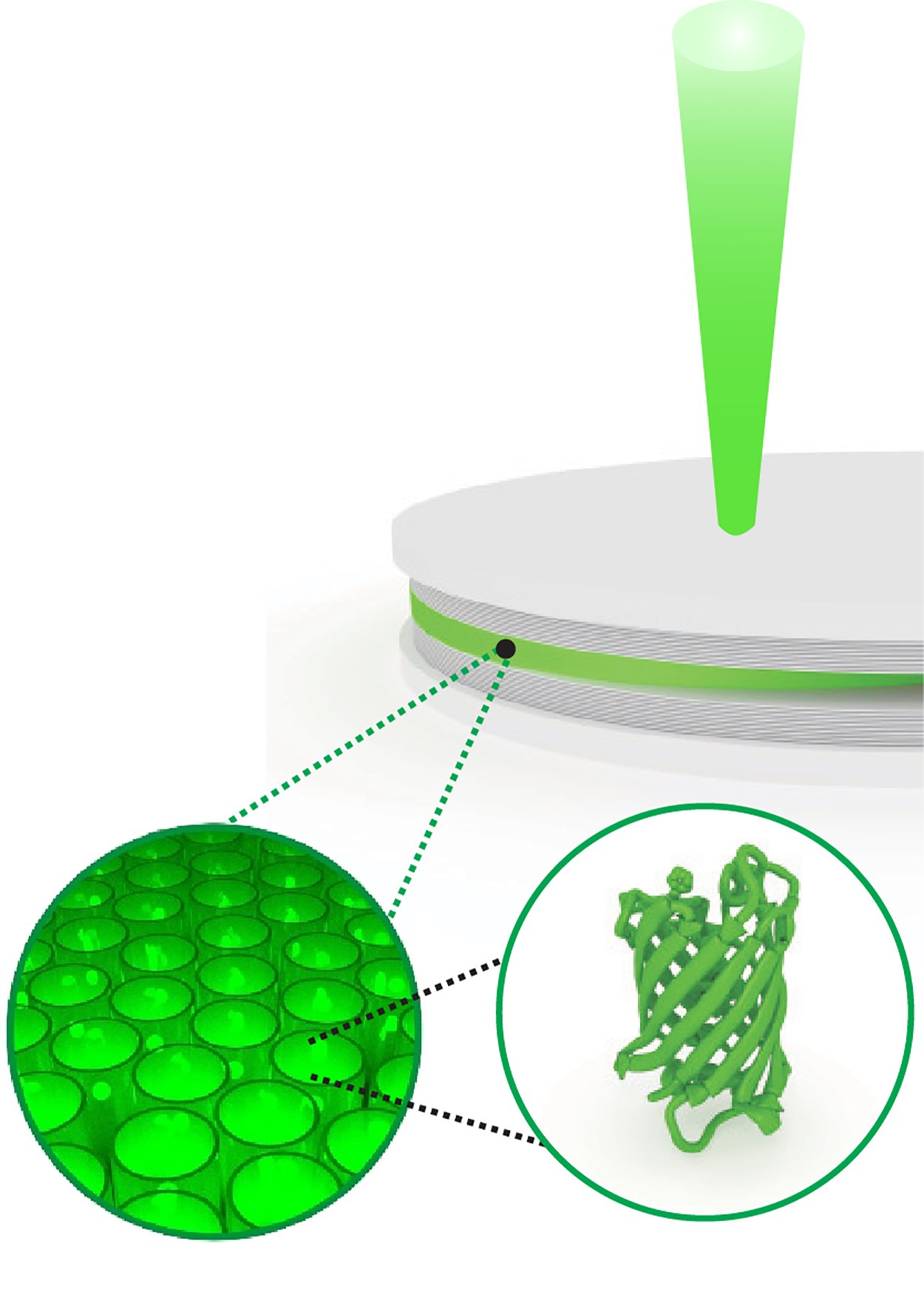This is the first of an ongoing series about biohacking.

I've always wanted super powers. Who wouldn't?
Biohacking is part of transhumanism.
Figuring out ways to make your biological machinery do things God probably never intended...
Unless your God is Stan Lee...

Cuz yeah, he's totally cool with it!
Laser vision is awesome!
But it's one of those powers that also has severe trade offs.
In almost every case, the hero is rendered blind or unable to control their vision without some prosthesis.

I think I've found a way to make this work without turning us all into lazer pony.
Conventional lasers work by bouncing light around inside of a cavity and then emitting identical photons as a beam.
It might sound like scifi, but bio-organic lasers are real and they're here right now. In fact we've had them since at least 2009. They're practically considered boring at this point. The problem is that the power source has to be much larger than the structure they were in. So at the moment, bio-organic lasers are used for tagging cells.
A group of cells, take up small laser collimator as a bubble of protein. Pulse the area where you inject it, with a strong external light and the collimator bubble will cause the entire cell to emit laser light containing information about what's inside the cell. It's presently used in bio-assay processes to figure out if a cell is really cancerous or not.
This process won't work invivo because you need a powerful coherent light pump to get it to work and that's not something you can easily fit inside a body. Thus far any dreams of using this to acquire a super power have had to wait.
Well the waiting is over!
There is another type of laser that is less well known...
The polariton laser.
Polaritons are particles that are part light, and part matter.
This laser works by tossing polaritons back and forth between excited molecules. Until they synchronize and then "bam!". This approach requires far, far less energy to get it up to lasing energies than cavity lasing approaches.
The reason it hasn't made its way into commercial use, is because it must be cooled to extremely low temperatures to work properly.
Evidently not a problem anymore!
Scientists have found a way to coax cells to produce a polariton laser emitting film that works at room temperature.
It only requires a bit of blue light in order to begin working.

A schematic illustration of a fluorescent protein polariton laser in action. Particles made from a mixture of light and electronic energy are created in a film of green fluorescent protein produced by live cells. The particles can synchronize each other to form a leaky condensate, with the leakage being a bright beam of laser light.
The film was sourced from e. coli that were coaxed into producing a jelly fish protein. However e. coli is just a model organism. Pretty much anything we can do to e. coli we can do to our own cells as well.
We already have a natural film on our eyes, it's called the conjunctiva.

It should be possible to get the initial blue light required for this film to begin lasing, by integrating the bioluminescent photophores from certain kinds of algae.

Thus we just trade the normal conjunctival cells for biolasing conjunctival cells created by splicing in the jelly fish polariton protein and the blue algae photophores.
It won't be long now, especially as biohacking becomes more mainsteam, but don't get your hopes up too high about what you'll be able to do with it.
I know we all want to be able to do this...

But I think I would be satisfied with this...

references:
http://superredundant.com/?comic=meet-the-gang
http://phys.org/news/2016-08-jellyfish-proteins-polariton-laser.html
So what do you think? Would you want laser vision? Also be sure to let me know what other super powers you'd like to have and the power with the highest number of upvotes will be featured in a future post.
